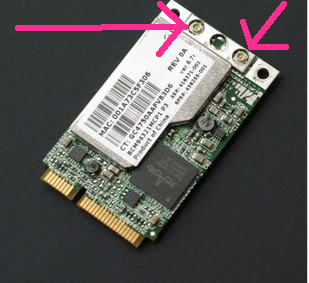Total Isotropic Sensitivity (TIS)
|
Total Isotropic Sensitivity (TIS) is a commonly quoted specification in the mobile phone industry. This, like
Total Radiated Power (TRP) is a parameter that depends on the
antenna and the receiver (or radio) that make up the communication link. To define TIS, we will start by understanding receiver
sensitivity.
SensitivityThe sensitivity of a receiver is the smallest amount of power that can be input to the receiver, such that the receiver can still maintain reliable communication. As an example, suppose the threshold Bit-Error Rate (BER) is 2.0%. This means that data can be transmitted reliably as long as the BER<2%. To determine this sensitivity, a known data signal is input to the receiver, and the BER is recorded. The first data signal typically has a high power, to ensure that the BER is lower than the threshold BER. The power on the data signal is gradually dropped until the BER reaches the threshold. As an example, and to make things concrete, consider the broadcom wireless module in Figure 1:
 Figure 1. Broadcom Wireless Receiver. The pink arrows point to the receiver terminals. The receiver connections are pointed to with the pink arrows. These connectors happen to be UFL-type, if you wanted to know. A device known as a CMU (which for some reason stands for Universal Radio Communications Tester) is hooked directly to the receiver ports. The tester will start by sending some known data signal, at which point the receiver under test transmits it back, and the CMU can determine the BER. Suppose the initial power was -60 dBm (dBm=decibels relative to a milliWatt) and the resultant BER was 0.001%. We will again take the BER threshold to be 2%. The power would be lowered, say to -61 dBm, and the process repeated. At -90dBm suppose the BER was 1.9%. The power would then be dropped to -90.5 dBm, and suppose the BER was 2.03%. The resultant sensitivity of the receiver would be recorded as -90 dBm, because this is the lowest power at which reliable communication was measured. Since the sensitivity is measured via wires instead of over the air as described below, this type of receiver sensitivity measurement is known as the conducted sensitivity of the receiver.
Total Isotropic SensitivityTotal Isotropic Sensitivity, or TIS, is a measure of the average sensitivity of a receiver-antenna system, when averaged over the entire 3-dimensional sphere. The result will be strongly related to the antenna's radiation pattern, as we will see.
To determine the TIS,
the system under test (the receiver/antenna package) is placed in an
anechoic chamber,
and the chamber antenna transmits at the system under test. The power is
lowered until the BER reaches the threshold.
Suppose that we did this for a fixed angle,
 The units of EIS are the same as that for sensitivity (i.e. power, typically measured in dBm). To determine the Total Isotropic Sensitivity, we need to also measure the phi component of the polarization, which for this specific angle would be written as:
 The Total Isotropic Sensitivity is the EIS components averaged over the entire sphere of angles:
 [1] [1]The averaging in equation [1] may seem slightly peculiar. Some reflection on this will clear things up. Since the EIS should be very small to contribute to the integral, we need terms such as 1/EIS contributing to the integration. If we were integrating over the sphere without taking the reciprocal, the angles for which the sensitivity was very poor (high values for sensitivity) would dominate the integration. As a result, the equation is inverted so that the smaller numbers (good sensitivity) are weighted correctly. As you can imagine, since the sensitivity measurement is an iterative measurement, and since we must measure both polarizations over the entire sphere, this measurement tends to take a very long time. Because of how long the measurement takes, you might ask if we can simply use the receiver sensitivity along with the antenna's radiation pattern in order to simplify this process. Since when we change polarizations or angles, the only variable is the antenna, it seems we should be able to account for this using just the antenna's radiation pattern? Well, the answer is no. The first, and primary reason is that the antenna is picking up noise from all the electronics that make up the system under test that the receiver wouldn't otherwise be exposed to. As an example, on mobile phones, the antenna receives energy from the memory and the phone's screen, which is delivered directly to the receiver. This desensitization of the receiver is known as desense. Since the antenna picks up added noise that the receiver otherwise wouldn't be exposed to, and since the antenna's efficiency is always less than 1, the TIS will always be worse (higher) than the receiver's conducted sensitivity. Also, as noted on the TRP page, the non-ideal impedance of the antenna will also affect the receiver. Commonly this causes a further degredation to the receiver's performance. It should be clear from this page that the TIS is a function of the antenna, the receiver module, and the noise environment in which the measurement is performed in (the noise environment includes the ambient noise [thermal], and the self-generated noise from the associated electronics). See also Effective Isotropic Sensitivity (EIS).
|
 , and for a fixed polarization,
say the
, and for a fixed polarization,
say the  . What we have just found is
the effective isotropic sensitivity (EIS) for that specific angle and wave polarization. The EIS is written as:
. What we have just found is
the effective isotropic sensitivity (EIS) for that specific angle and wave polarization. The EIS is written as: